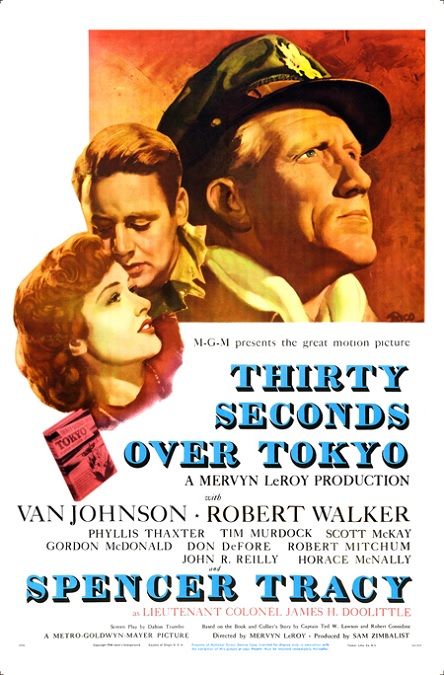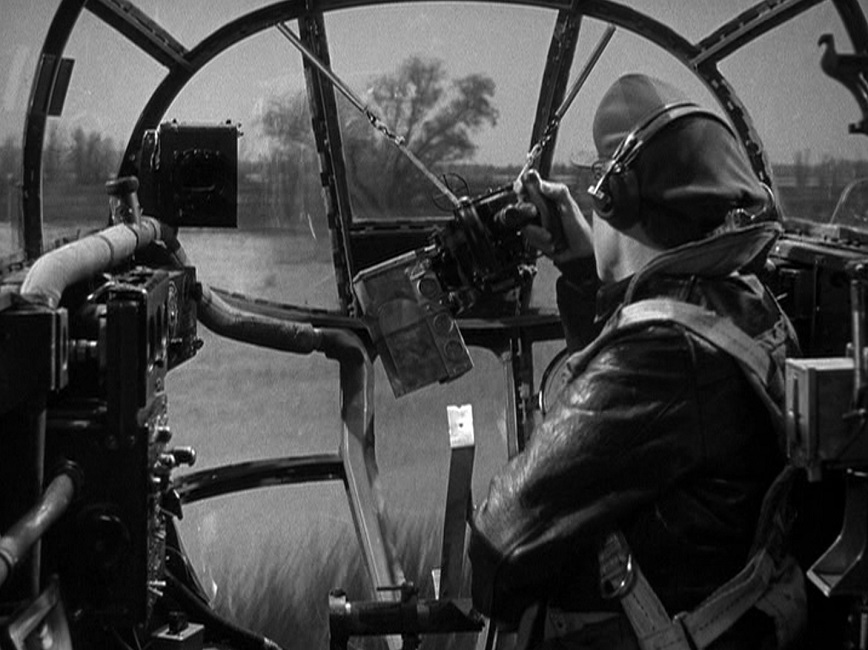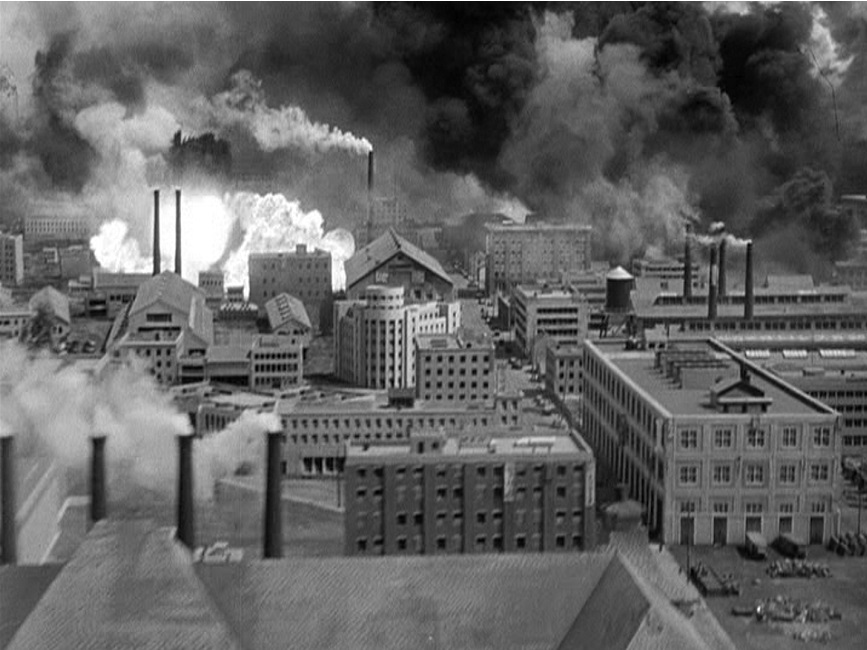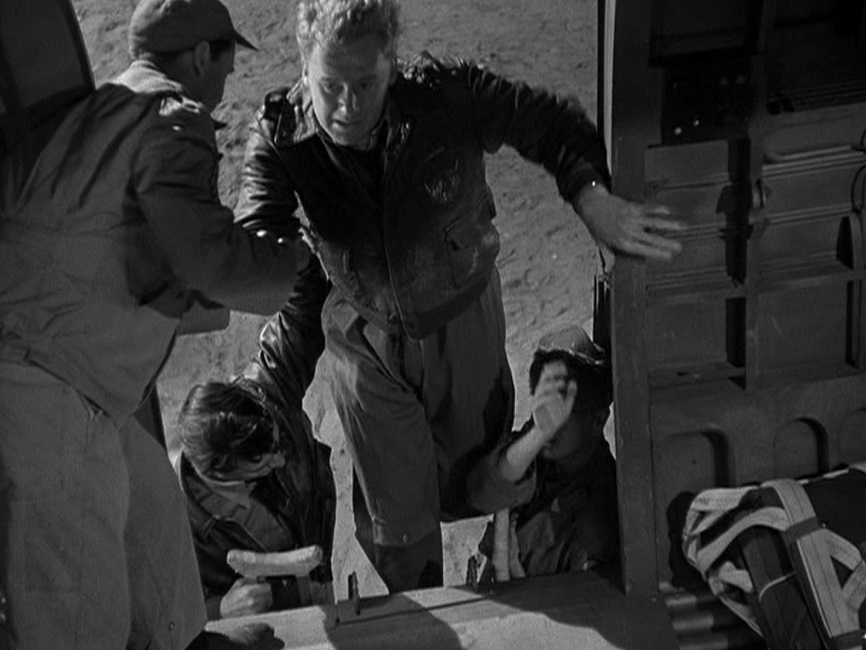



Thirty Seconds Over Tokyo – 1944 (WINNER)

Here we are with another war film, and this was a good one. I think the movie’s main focus with its special effects was twofold. It concentrated on low altitude stunt flying and scale models. But there were also some fantastic matte-paintings and an incredibly well crafted illusion of a man who loses his leg. When comparing the effects in this film with the other nominees in 1944, I can understand why it took home the Oscar.
So first, there is the stunt flying. You could easily tell that it was the real deal. We are shown images of the landscape flying by, and sure, most of the shots are from the pilot and crew’s points of view. The shots of trees and buildings outside their windows are clearly rear-projection shots. But that footage had to have been filmed before it could be projected. That camera might have been attached to a more maneuverable plane, but it was a pretty cool illusion. Also, we are given shots from outside the aircraft, showing how low it was flying, though I noticed that those shots were clear of trees or other obstacles.
Then there was the sequence where the city of Tokyo gets bombed. The use of scale models of the city as the bombs destroyed their targets was very effective. The image was clear and detailed with smoke billowing from the factory exhaust towers before the bombs detonated. The grand explosions, with plenty of fire and smoke, showed audiences just how devastating that part of the war could be.
But to the film’s credit, that bombing scene was flashy but brief… actually around forty-five seconds or so. After that, the bomber crash lands on the beach during a heavy storm. The wind, the waves, and the pelting rain really put the actors through their paces. It was an exciting scene, but then the surviving bomber crew are rescued by Chinese allies. There are some stunning matte-paintings of the Chinese countryside as they are carried to safety on litters.
But for me, the special effect that caught my attention was Van Johnson’s character, Lieutenant Lawson, after he has his leg amputated. Sure, it was probably a relatively easy effect, but because the film took the time to develop the main character, allowing me to be emotionally invested in him, the simple illusion of the missing leg was more moving than the bombing of a city.
I believe they used a few different methods for the effect, like using a real amputee as a body-double in shots where his face is not shown, or simply strapping his leg behind him when he is shown from the front. They might also have rigged his wheelchair with a false seat to hide his leg. However they did it, they paid special attention to the effect, making it as real and believable as possible, and they did a fantastic job. This Oscar was a well-deserved award.